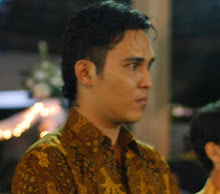Bandung is the capital of West Java in Indonesia. Bandung is 180 kilometers southeast from Jakarta. Although it has a population of over two million the pace of city life is slower than Jakarta's. Today Bandung has a population of 2 million people, Bandung area an estimated 4 million. Bandung is situated on a plateau 768 meters above sea level with a cool climate throughout the year. Bandung is the most European city of Java. The raining season starts in Bandung a little bit earlier, then the rest of Indonesia. Normally the raining season in Indonesia is from October till May, the peak of the raining season is in January. The dry season is from June until August, temperature is then 25-30 degrees Celsius during the day. In the morning, the sun is almost shining every day, but in the afternoon many times it gets cloudy, for sunbathing we have to wake up early from 6.30 the sun is already there. In the evening when the sun is down the temperature has drops. The average temperature in Bandung is 22 degrees Celsius; the weather is pleasant all year round.
Just a 15 minutes drive from Tangkuban Perahu is a hot springs resort. Here we can swim in warm mineral water pools, good for healing skin problems. The resort provides visitors with a bar, restaurants, tennis courts and cottage style hotels overlooking a beautiful mountain-scope.
In Bandung, try to see the "Wayang Golek" wooden puppet show and hear the "Angklung" bamboo orchestra, as well as the classical Sundanese gamelan and dances. Several institutes of higher education are located here, including the country's prestigious Bandung Institute of Technology.
HISTORY
In 1488, the area now named Bandung was the capital of the Kingdom of Pajajaran. During colonial times, the government of the Dutch East Indies built a supply road connecting Batavia (now Jakarta), Bogor, Cianjur, Bandung, Sumedang and Cirebon. This event was very important for the growth of Bandung. In the 1930s the Dutch East Indies government planned for Bandung to become the capital of the Dutch East Indies due to its location, however World War II disrupted these plans.
It is not known exactly when Bandung city was built. However, contrary to the beliefs of some the city was not originally built by the orders of Daendels, the Dutch East Indies Governor General, but by the orders of 'Bupati' R.A. Wiranatakusumah II. The Dutch colonial powers built wide tree-lined boulevards, villas, gardens, and fountains, earning Bandung the nickname of "Parijs van Java", the Paris of Java, in the early 20th century. Many of these structures survive to today, and can be seen along the road leading to the Dago area north of the city.
After Indonesian independence, Bandung was named as the provincial capital of West Java. Bandung was the site of the Bandung Conference which met April 18-April 24, 1955 with the aim of promoting economic and cultural cooperation among the African and Asian countries, and to counter the threat of colonialism or neocolonialism by the United States, the Soviet Union, or other imperialistic nations.
